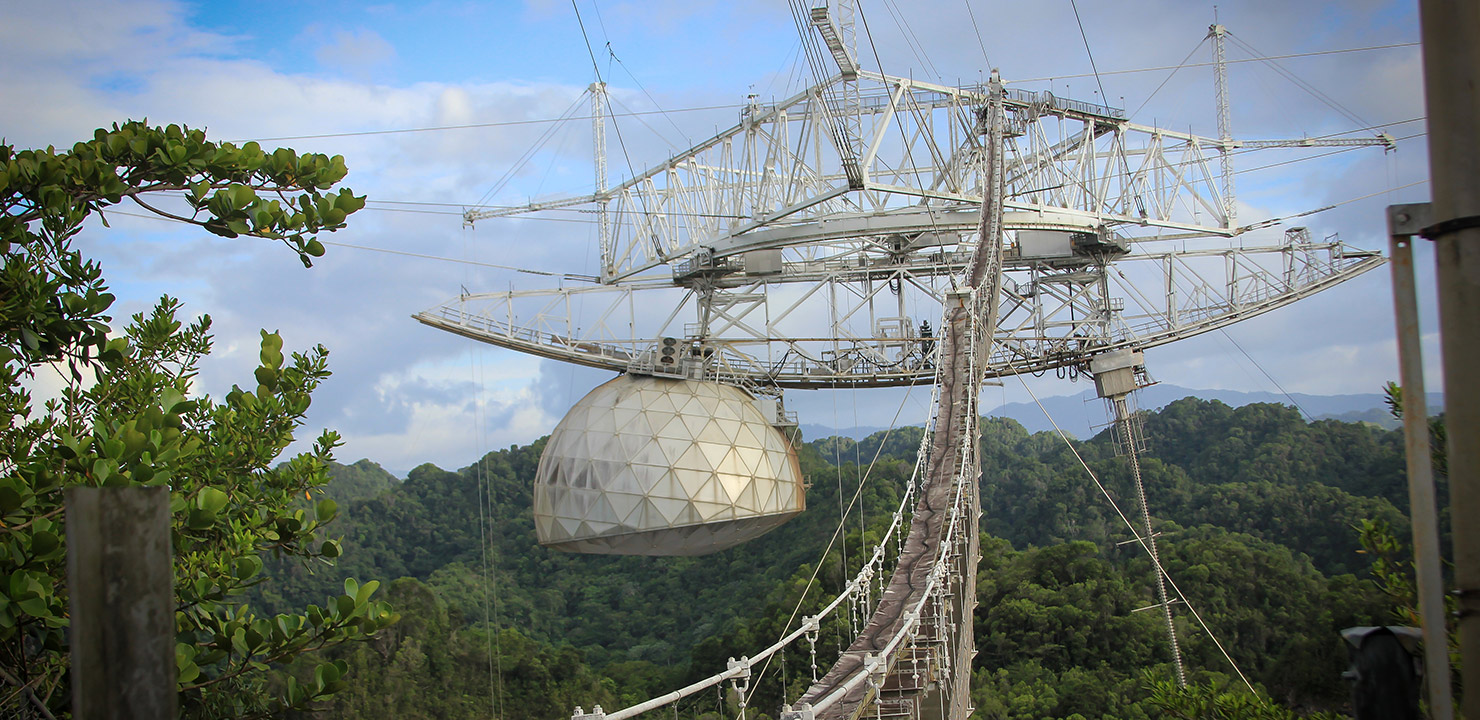
No Replacement for Arecibo Telescope
November 2022 :
Although the Arecibo radio telescope was no longer the largest in the world, it was the most famous, even appearing in two blockbuster movies. Sadly, the 1.000-foot dish was recently damaged when a 100-foot hole was caused by breaking cables in 2020, and eventually the entire upper structure slammed into the dish, ruining the entire facility.. As the structure was deemed too unstable, the facility was closed, but there was positive talk concerning repairing the dome.
Now, however, the NSF (National Science Foundation) has announced the telescope will not be rebuilt: instead, the NSF will create an education center at the site, in order to “promote programs and partnerships related to science, technology, engineering and math.” Unfortunately, there will not be funds to continue research that is still in use, such as the Lidar facility, which studies the upper atmosphere to analyze cloud cover and precipitation information.
This is the second large radio telescope no longer in use in the U.S.. For 25 years, from 1959 to 1984, the University of Illinois operated the Vermilion River Observatory, a 600-foot by 400-foot carved-out river valley 45 miles from the main campus. An aerial survey had noted that the area was naturally contoured to create the shape needed for radio observing, and, once shaped, it was covered with asphalt and wire mesh, then a 15-foot trestle was constructed to carry the receivers. Unfortunately, erosion gradually made the operation defective, and vandalism, including that of the steerable dish, made working almost impossible, and it was decommissioned in 1984.
Today, there seems to be only one radio telescope made from a carved-out piece of land: FAST, the 500-meter spherical facility located in a depression in Guizhou, China. Now the world’s largest single dish telescope in the world, having a receiving area equivalent to 30 football fields, it is believed FAST will remain in its world-class status for at least 25 to 30 years.
Credit: University of Central Florida



